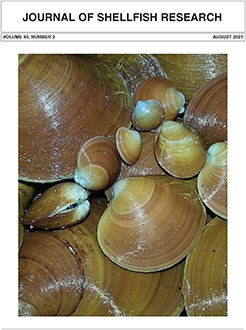Shell planting to enhance oyster recruitment and habitat in Delaware Bay, NJ was reinitiated in 2005 with 3 y of federal funding. Since then, annual plantings of locally available surf clam and ocean quahog shell have been funded by the oyster fishery. The cured shell is deployed directly onto sites already containing commercially viable numbers of market-sized oysters in areas that are routinely fished sustainably. The locations targeted to receive shell plants vary and are selected to provide the greatest benefit throughout the fished reef tract. Annual sampling that included shell plants from 2005 through 2017 permitted evaluation of their performance. New oysters set and survive preferentially on newly planted shell during the first season and later at the same level as native shell for at least 10 y so that the benefit of once-added shell is retained for over a decade. Recruitment to shell plants enhances “good” sets and makes a critical difference during years of “poor” set. Plant substrate, now with oysters of its own, significantly outperforms native substrate in recruitment and survival of oysters in the second and third years post-planting, with enhancement declining exponentially over the first 4 y. An estimated half-life for this decline is just under 1 y. Beyond 3 y, the plant-based substrate continues to perform at least as well as native substrate. Size–frequency analysis shows that first-year oysters on planted substrate are larger than those on native substrate and that this difference carries through the fourth year of a plant. The volume contributed by live and dead oysters on planted substrate increases over the first 5 y until the contribution to the reef from planted substrate volume matches that of native substrate, thus carrying the enhancement forward through time. Annual survey data from the first 4 y of shell plants show that on seven of eight beds, live plus dead oyster density (number m–2) was up to 2.8× greater on planted sites than on non-planted sites. Change in density averaged positive over time on both planted and non-planted sites but was greater on planted sites. Shell plants on beds in the Delaware Bay fishery provide 3–4 y of enhanced oyster productivity and continue to double the local native substrate productivity as they age, maintaining an active and productive fishery.
How to translate text using browser tools
14 September 2021
Oyster Recruitment and Persistence on Planted Versus Native Substrate over 13 Years in the Delaware Bay Oyster Fishery Resource
Kathryn A. Ashton-Alcox,
Jason M. Morson,
Eric N. Powell,
Jennifer E. Gius,
Daphne M. Munroe,
David Bushek
ACCESS THE FULL ARTICLE

Journal of Shellfish Research
Vol. 40 • No. 2
August 2021
Vol. 40 • No. 2
August 2021
Delaware Bay
enhancement
fishery
oyster
recruitment
shell plant
substrates




